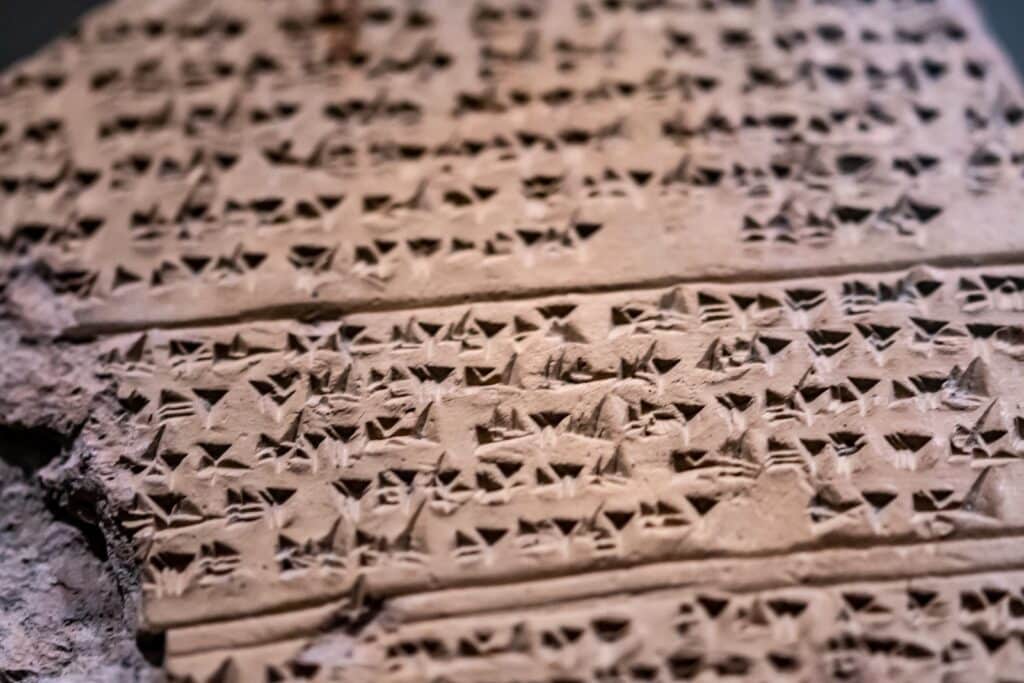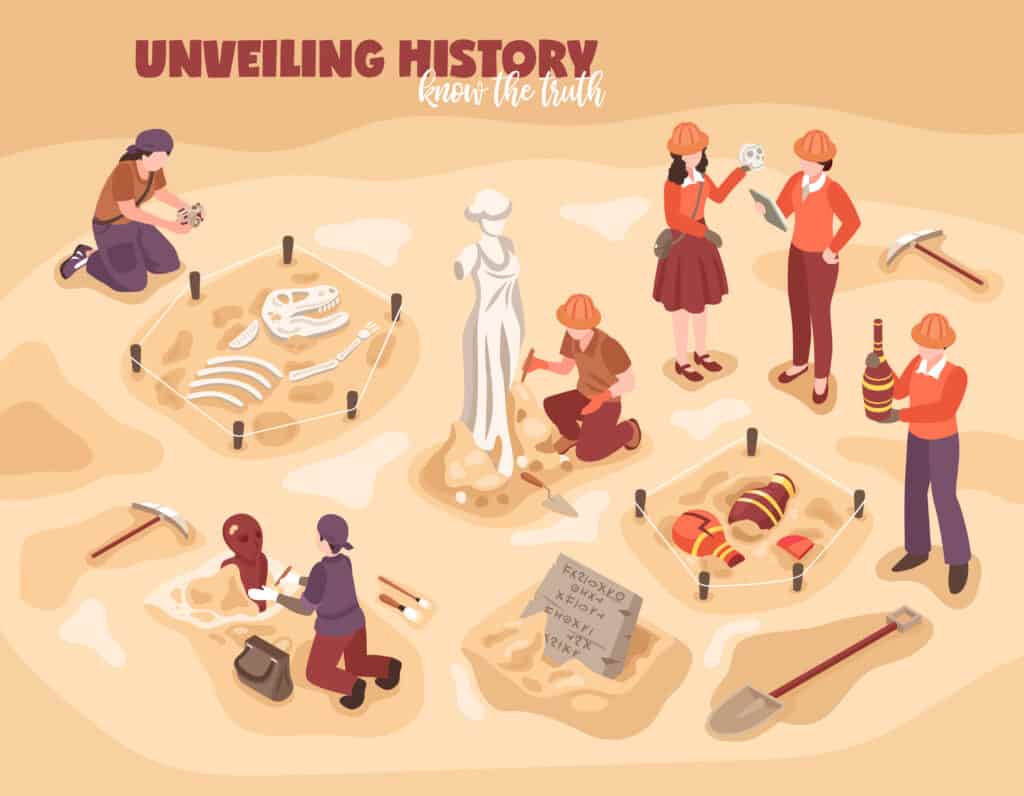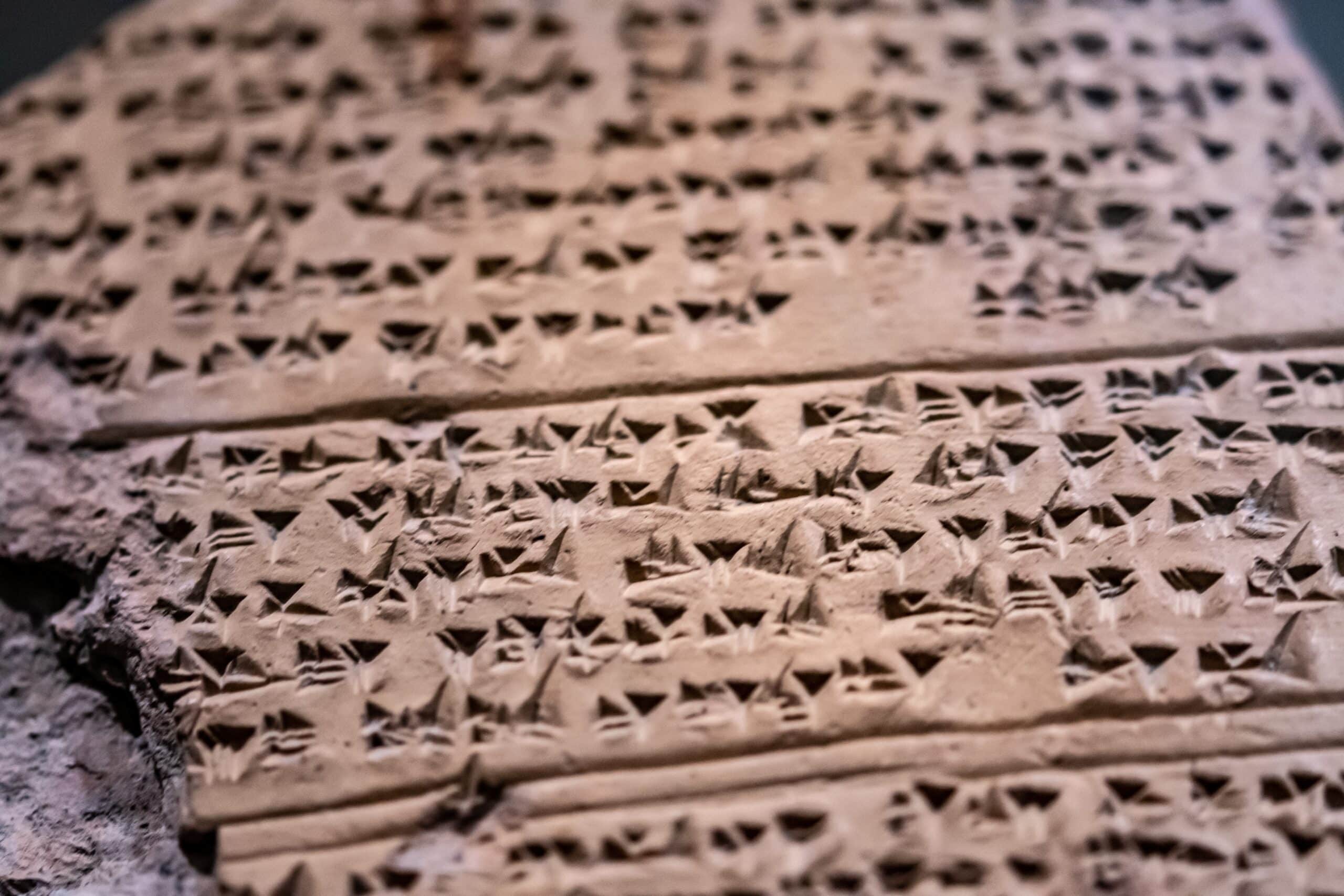Decoding the Past: AI Revolutionizes Ancient Cuneiform Tablet Translation

The advent of artificial intelligence (AI) has revolutionized various fields, and its impact on deciphering ancient cuneiform tablets is nothing short of transformative. Cuneiform, a system of writing that emerged in ancient Mesopotamia around 3500 BCE, has long been a source of fascination and intrigue for historians and linguists. However, the complex nature of cuneiform symbols and the sheer volume of existing tablets have posed significant challenges to deciphering their contents.
AI has emerged as a powerful tool for overcoming these challenges, offering unprecedented capabilities for understanding these enigmatic inscriptions. By leveraging machine learning algorithms and advanced pattern recognition techniques, AI systems can analyze cuneiform symbols with remarkable accuracy and speed, even when they are eroded, fragmented, or incomplete.
One of the most significant contributions of AI to cuneiform studies has been its ability to automate the process of transcribing cuneiform texts. This task, once a laborious and time-consuming endeavor for human experts, can now be accomplished with remarkable efficiency using AI-powered tools. By automatically converting cuneiform symbols into their corresponding phonetic values, AI systems have significantly accelerated the pace of cuneiform decipherment.
Beyond transcription, AI is also playing a crucial role in semantic analysis, the process of interpreting the meaning of the transcribed texts. AI systems can identify patterns and relationships between cuneiform symbols, enabling them to infer the meaning of words, phrases, and even entire sentences. This capability is proving invaluable for understanding the content of cuneiform tablets, which often deal with a wide range of topics, including history, literature, law, and religion.
AI has also opened up new avenues for exploring cuneiform texts by enabling researchers to analyze large corpora of data in a systematic and comprehensive manner. AI-powered tools can identify statistical patterns and correlations within cuneiform texts, revealing insights into the linguistic structure, cultural context, and historical evolution of this ancient writing system.
The transformative impact of AI on cuneiform studies is evident in numerous groundbreaking research projects. For instance, the Cuneiform Digital Media Initiative (CDMI) is utilizing AI to digitize and transcribe vast collections of cuneiform tablets, making them accessible to researchers worldwide. Similarly, the Enki project is employing AI to develop a comprehensive cuneiform dictionary and grammar, greatly enhancing the tools available for deciphering these ancient texts.
While AI has undoubtedly revolutionized cuneiform studies, it is important to recognize that human expertise remains essential for interpreting and contextualizing the deciphered texts. AI systems can provide valuable insights and automation, but they cannot replace the deep understanding and critical thinking skills of human scholars.
The future of AI in cuneiform studies holds immense promise. As AI algorithms continue to evolve and become more sophisticated, their ability to decipher and interpret cuneiform texts is likely to improve dramatically. This progress will not only unlock the secrets of our historical past but also provide a deeper understanding of the development of writing systems, language, and culture in ancient civilizations.
Understanding the Historical Importance of Cuneiform Tablets in Mesopotamian Civilizations

Cuneiform, a complex system of writing that emerged in ancient Mesopotamia around 3500 BCE, played a pivotal role in shaping the civilizations that thrived in this region. These meticulously inscribed tablets, made from wet clay and baked in ovens, served as the primary means of communication and record-keeping for over three millennia. They offer a unique window into the lives, cultures, and achievements of these ancient societies.
Cuneiform tablets hold immense historical significance for several reasons:
Cuneiform tablets contain a vast repository of knowledge, encompassing various aspects of Mesopotamian life, including history, literature, law, religion, astronomy, mathematics, and medicine. These tablets have preserved myths, epics, legal codes, administrative records, and scientific treatises that provide invaluable insights into the intellectual and cultural landscape of ancient Mesopotamia.
Cuneiform tablets provide detailed documentation of economic and social structures in Mesopotamian civilizations. They record trade transactions, land ownership, labor contracts, and legal disputes, offering a glimpse into the complex economic systems and social hierarchies that governed these societies.
Cuneiform tablets illuminate the political and administrative systems of Mesopotamian kingdoms. They contain royal decrees, diplomatic correspondence, and military records, revealing the intricacies of governance, power dynamics, and international relations in these ancient empires.
Challenges Historians Faced in Translating These Ancient Scripts Manually
The decipherment of cuneiform scripts posed significant challenges for historians for centuries. These challenges stemmed from the following factors:
Cuneiform is a logographic writing system, meaning that each symbol represents a word, concept, or phrase. This complexity made it difficult to establish correspondences between cuneiform symbols and their spoken counterparts, particularly for symbols representing abstract concepts.
The availability of bilingual texts, where cuneiform was written alongside a known language, was limited. This scarcity of parallel texts hindered the process of identifying the meaning of cuneiform symbols and their phonetic values.
Over time, many cuneiform tablets have been damaged or fragmented due to natural disasters, human activities, and the passage of time. This fragmentation made it challenging to reconstruct the original text and extract its full meaning.
Cuneiform writing evolved over time and varied across regions in Mesopotamia. This lack of standardization further complicated the task of deciphering the scripts.
Overcoming the Challenges: The Role of AI in Cuneiform Decipherment
The advent of artificial intelligence (AI) has revolutionized the field of cuneiform studies, providing powerful tools to overcome the challenges that have long hindered the decipherment of these ancient texts. AI-powered systems have demonstrated remarkable capabilities in:
AI algorithms can automatically transcribe cuneiform symbols into their corresponding phonetic values, significantly accelerating the process of converting cuneiform texts into a more readable form.
AI systems can analyze the patterns and relationships between cuneiform symbols, identifying statistical correlations and linguistic structures that aid in deciphering the meaning of words and phrases.
AI systems can infer the meaning of cuneiform texts by considering the context in which they were written, taking into account historical, cultural, and linguistic factors.
AI-powered tools can digitize and archive vast collections of cuneiform tablets, making them accessible to researchers worldwide and facilitating large-scale data analysis.
The impact of AI on cuneiform studies has been transformative, accelerating the pace of decipherment, unlocking new insights into these ancient texts, and opening up new avenues for research. While AI cannot replace the deep understanding and critical thinking skills of human scholars, it has become an indispensable tool for unraveling the mysteries of cuneiform and revealing the rich tapestry of Mesopotamian civilizations.
The Evolution of AI in Linguistics
Artificial intelligence (AI) has revolutionized the field of linguistics and language processing, transforming the way we interact with and understand language. From machine translation to sentiment analysis, AI is enabling us to bridge language barriers, extract meaning from unstructured data, and gain deeper insights into human communication.
The Early Days of AI in Linguistics
The early roots of AI in linguistics can be traced back to the 1950s, when researchers began exploring the use of computers to analyze language. One of the first significant breakthroughs was the development of the Chomsky-Miller grammar model, which provided a formal framework for analyzing sentence structure.
In the 1960s and 1970s, the field of computational linguistics emerged, focused on developing algorithms for natural language processing (NLP) tasks such as machine translation and text summarization. These early NLP systems were rule-based, relying on hand-crafted rules and dictionaries to process language.
The Rise of Machine Learning and Neural Networks
The field of AI in linguistics underwent a major transformation in the 1980s and 1990s with the advent of machine learning and artificial neural networks. These new techniques enabled AI systems to learn from data, rather than relying on pre-programmed rules. This led to significant improvements in the performance of NLP systems, particularly in areas such as machine translation and speech recognition.
In the early 2000s, the focus of AI in linguistics shifted to deep learning, a subfield of machine learning that utilizes artificial neural networks with multiple layers. Deep learning has revolutionized NLP, enabling AI systems to achieve human-level performance on a wide range of tasks.
Natural Language Processing: Revolutionizing Language Translation
Machine translation (MT) is one of the most impactful applications of AI in linguistics. Early MT systems were based on statistical approaches, using large corpora of bilingual text to infer correspondences between words and phrases.
With the advent of deep learning, MT systems have achieved remarkable progress, producing translations that are often indistinguishable from human-generated translations. This breakthrough has significantly reduced language barriers, facilitating communication and collaboration across cultures and borders.
Beyond Machine Translation: AI’s Impact on Linguistics
AI has also transformed other areas of linguistics, including:
AI systems can now analyze text to identify the sentiment or emotional tone of the language, providing valuable insights into customer feedback, social media trends, and brand perception.
AI can identify and classify named entities in text, such as people, organizations, and locations, enabling applications like information extraction and knowledge base construction.
AI can generate concise summaries of lengthy texts, providing quick overviews of documents and extracting key information.
AI systems can answer questions based on text, enabling applications like chatbots, virtual assistants, and intelligent search engines.
The Future of AI in Linguistics
The future of AI in linguistics holds immense promise. As AI algorithms continue to evolve and become more sophisticated, we can expect further advances in NLP, enabling machines to understand and generate language with even greater fluency and accuracy.
AI has the potential to revolutionize the way we communicate, learn, and access information. It will continue to play a transformative role in linguistics, bridging the gap between human language and machine understanding, shaping the future of communication and artificial intelligence.
Cuneiform, a complex and ancient writing system that emerged in Mesopotamia around 3500 BCE, presents a formidable challenge to human translators. Its intricate symbols, diverse dialects, and fragmented texts have long posed significant obstacles to deciphering and translating this enigmatic script.
The Intricacies of Cuneiform Script
Cuneiform, meaning “wedge-shaped” in Latin, is a logographic writing system, where each symbol represents a word, concept, or phrase. This contrasts with alphabetic writing systems, where each symbol represents a sound. The complexity of cuneiform stems from the sheer number of symbols, estimated to be over 500, and the varied ways in which these symbols can be combined to represent different words and concepts.
Diverse Dialects and Fragmentary Texts
Cuneiform was not a single, unified language but rather a family of dialects that evolved over time and across different regions of Mesopotamia. This linguistic diversity adds another layer of complexity to translation, as translators must be familiar with the specific dialect used in a particular text.
Furthermore, many cuneiform tablets have been damaged or fragmented over time, making it challenging to reconstruct the original text and extract its full meaning. This fragmentation can significantly hinder the translator’s ability to grasp the context and nuances of the writing.
Limitations of Traditional Translation Methods
Traditional methods of cuneiform translation rely heavily on human expertise and intuition. Translators must possess a deep understanding of the cuneiform script, its dialects, and the historical and cultural context of the texts. This process is often time-consuming and laborious, and even the most skilled translators can face difficulties in interpreting ambiguous or damaged texts.
The Role of Artificial Intelligence in Cuneiform Translation
The advent of artificial intelligence (AI) has offered new hope for overcoming the challenges of cuneiform translation. AI algorithms can analyze patterns and relationships between cuneiform symbols, identifying statistical correlations and linguistic structures that aid in deciphering the meaning of words and phrases.
AI-powered systems can also automate the transcription of cuneiform symbols, significantly accelerating the process of converting cuneiform texts into a more readable form. This automation frees up human translators to focus on more complex tasks such as interpreting ambiguous passages and contextualizing the meaning of the texts.
AI: A Valuable Tool in Cuneiform Translation
While AI cannot replace the deep understanding and critical thinking skills of human translators, it has become an indispensable tool for unraveling the mysteries of cuneiform. AI-powered systems are helping to accelerate the pace of translation, improve accuracy, and expand our understanding of this ancient script and the rich cultures that produced it.
The combination of human expertise and AI capabilities is proving to be a powerful force in cuneiform translation, opening up new avenues for research and revealing the secrets of this enigmatic writing system. As AI algorithms continue to evolve, their contribution to cuneiform translation is likely to grow even more significant, furthering our understanding of ancient Mesopotamian civilizations and their enduring legacy.
AI in Linguistic Archaeology
The integration of artificial intelligence (AI) into the field of linguistic archaeology has revolutionized the way we study and decipher ancient scripts. AI-powered tools and techniques are providing researchers with new and powerful ways to analyze, translate, and understand these enigmatic texts, unlocking the secrets of lost civilizations and shedding light on the past.
Overview of AI Tools and Techniques for Ancient Script Translation
A variety of AI tools and techniques are being employed in the field of linguistic archaeology to translate ancient scripts. These tools and techniques can be broadly categorized into two main approaches:
These systems rely on hand-crafted rules and dictionaries to analyze and translate ancient scripts. While these systems have been successful in translating certain types of texts, they are limited in their ability to handle the complexities of human language, such as ambiguity, context, and nuance.
SMT systems utilize large corpora of parallel text, where the same text is available in both the ancient script and a known language, to learn statistical relationships between words and phrases. These systems have shown remarkable improvements in translation accuracy, particularly for languages with a significant amount of parallel text available.
Deep learning, a subfield of machine learning, has emerged as a powerful tool for ancient script translation. Deep learning algorithms can learn from vast amounts of data, including unlabeled text, to identify patterns and relationships that aid in translation. This approach has led to significant breakthroughs in the translation of ancient scripts, even for those with limited parallel text available.
Specific Tools and Techniques
In addition to these general approaches, several specific AI tools and techniques are being used for ancient script translation:
- Named entity recognition (NER): NER identifies and classifies named entities in text, such as people, places, and organizations. This information can be used to improve the accuracy of translation by providing contextual clues.
Part-of-speech tagging (POS tagging): POS tagging labels parts of speech in text, such as nouns, verbs, and adjectives. This information can be used to improve the accuracy of translation by identifying grammatical structures and relationships.
Morphological analysis: Morphological analysis breaks down words into their constituent morphemes, the smallest meaningful units of language. This information can be used to identify word roots and affixes, providing insights into the meaning of words and their relationships to each other.
Semantic analysis: Semantic analysis attempts to understand the meaning of text by considering the context in which it was written, taking into account historical, cultural, and linguistic factors. This type of analysis is particularly important for ancient scripts, where the meaning of words and phrases can be obscure.
Impact of AI on Linguistic Archaeology
The integration of AI into linguistic archaeology has had a profound impact on the field. AI-powered tools and techniques have:
Accelerated the pace of translation: AI systems can analyze and translate ancient scripts much faster than human translators, enabling researchers to make more rapid progress in deciphering these texts.
Improved translation accuracy: AI systems have achieved remarkable improvements in translation accuracy, particularly for languages with limited parallel text available. This newfound accuracy is providing researchers with more reliable and trustworthy translations of ancient texts.
Expanded the scope of translation: AI systems are enabling researchers to translate a wider range of ancient scripts, including those that were previously considered too complex or difficult to decipher. This is opening up new avenues of research and providing insights into previously unknown aspects of ancient civilizations.
Challenges and Future Directions
Despite the significant progress made in AI-powered ancient script translation, there are still challenges that need to be addressed:
Limited training data: Many ancient scripts have limited amounts of parallel text available, which can hinder the performance of machine learning algorithms.
Ambiguity and context: Ancient scripts often contain ambiguous words and phrases, and the meaning of these texts can be heavily influenced by context. AI systems are still developing the ability to handle these complexities of human language.
Human expertise: AI systems cannot replace the deep understanding and critical thinking skills of human experts in linguistic archaeology. Human translators are still essential for interpreting ambiguous passages, contextualizing the meaning of the texts, and providing insights into the historical and cultural context.
Moving forward, researchers are focusing on developing AI systems that can better handle ambiguity and context, leveraging more diverse data sources, and integrating AI tools with human expertise to create more effective and comprehensive translation workflows. As AI algorithms continue to evolve, their impact on linguistic archaeology is only expected to grow, further unlocking the secrets of ancient scripts and revealing the rich tapestry of human history.
